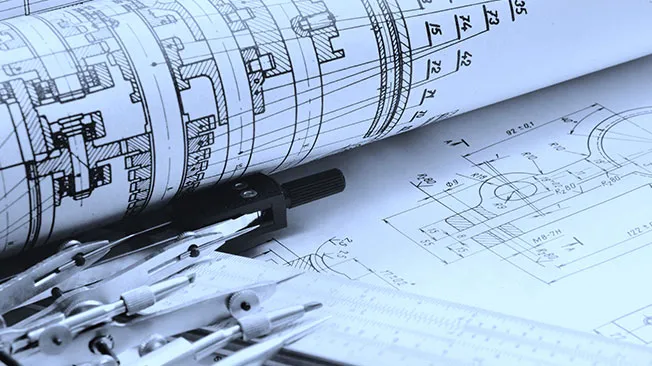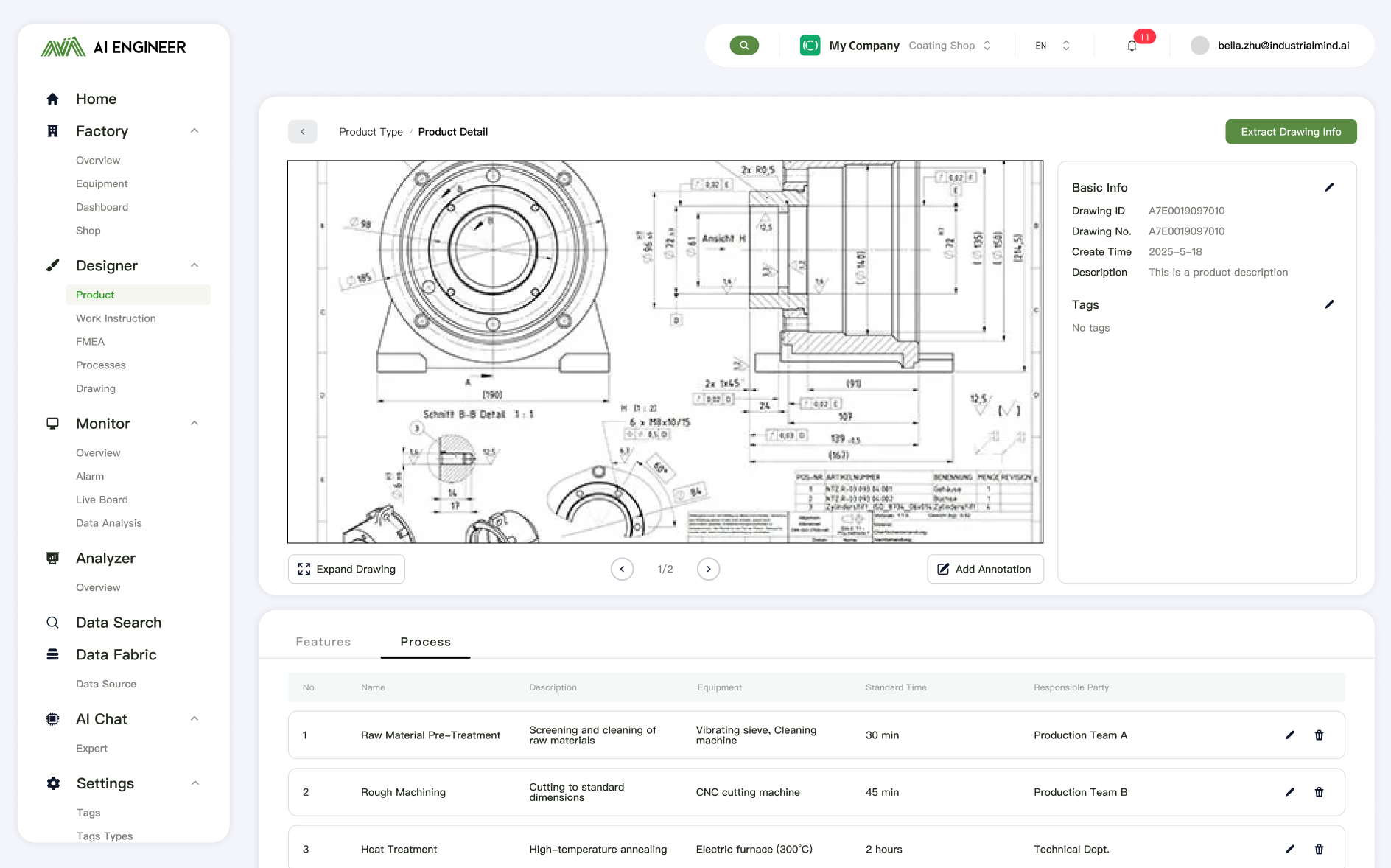In today's increasingly competitive global manufacturing landscape, the efficiency of transitioning from design to production has become critical for business survival. Traditional process design often requires senior engineers to spend weeks on a single project, creating not only efficiency bottlenecks but also knowledge transfer risks. However, the rise of artificial intelligence brings revolutionary solutions to these challenges.

Process design serves as the crucial bridge connecting product design with actual production. Excellent manufacturing process design can save companies up to 30% in operational costs by reducing both time expenses and quality risks. Yet this process has long relied on engineers' accumulated experience and manual operations.
Traditional process design faces three core challenges: it requires deep understanding of engineering knowledge, product specifications, and production line conditions; it's overly dependent on individual experience, making standardization and knowledge transfer difficult; and it's inefficient, often becoming the bottleneck in the entire production chain.
While the industry previously attempted solutions like CAPP (Computer-Aided Process Planning) systems, before the emergence of generative AI, traditional AI had very limited knowledge processing capabilities, causing most of these attempts to fail. Now, with breakthrough advances in AI technology, we finally see new possibilities emerging.
Driven by AI technology, we're building an entirely new process design paradigm that uses artificial intelligence to understand design drawings and learn manufacturing experience, truly bridging the gap from design to manufacturing.
Engineering design drawings are like a product's "genetic code," containing nearly all information from dimensional requirements and product structure to special processing requirements. This information may include surface pretreatment requirements, technical surface plating processes, precision hole specifications, and other complex details.
Our AI system can interpret these drawings like a seasoned engineer, automatically identifying whether bending requirements exist, special processing needs, and specific specifications for various holes. Through the combination of computer vision and natural language processing technologies, AI can complete drawing analysis in minutes that would traditionally take engineers hours.
A process engineer with 15 years of experience notes: "I used to spend an entire day carefully studying drawings. Now the AI system completes this work in minutes without missing any details."

In manufacturing, experience is the most valuable asset. The process knowledge accumulated by senior engineers through years of practice often forms a company's core competitive advantage. Our AI system can learn and inherit this valuable experience, transforming tacit knowledge into reusable intelligent models.
By analyzing historical process documentation, production data, and quality records, the AI system understands the logic behind different process choices, learning how to balance quality, cost, and efficiency under various conditions. This not only solves knowledge transfer issues but also enables continuous optimization and improvement.
Understanding design and historical experience isn't enough—the AI system also needs to comprehend the current state of production lines and equipment. This step isn't about optimizing the production line itself, but accurately grasping existing production capabilities and constraints.
By integrating various sensor data, equipment status information, and real-time production data, the AI system can accurately assess each workstation's processing capacity, equipment precision, and current load conditions. This ensures that generated process plans are not only theoretically feasible but also executable in actual production.
Based on comprehensive understanding of drawings, historical processes, and current equipment status, the AI system can generate highly customized process plans. More remarkably, through generative AI capabilities, the system can flexibly respond to engineers' specific requirements for every detail.
For example, when an engineer wants to add additional quality inspection steps to the process, the AI system can intelligently adjust the entire workflow, ensuring new inspection steps integrate perfectly with other operations. The system also supports combining process templates with AI generation, ensuring standardization while allowing fine-tuning for specific requirements.

"Nobody likes writing documentation"—this statement couldn't be more true in manufacturing. However, detailed process documentation is crucial for ensuring production quality and operational safety. Our AI system can automatically generate various shop floor documents, including operation instruction sheets, quality checklists, and equipment setup parameters.
These documents are not only accurate in content and standardized in format but can also be customized according to different roles' needs. Operators see clear, concise operation steps; quality inspectors receive detailed inspection points; and managers get comprehensive process overviews.
Beyond traditional process design functions, AI technology opens new business possibilities. Rapid, accurate quoting capability is becoming a core competitive advantage for many companies in fierce competition.
Imagine this scenario: when a customer sends a product requirement, you can provide precise quotes within minutes. Even if the customer doesn't make an immediate decision, they'll be impressed by your rapid response capability. This ability offers significant advantages in shortening sales cycles and improving win rates.
Through AI system's accurate assessment of process complexity, combined with real-time material costs and production capacity data, companies can achieve unprecedented quoting speed and accuracy. A manufacturing company using our system reported reducing their average quoting time from 3-5 business days to under 30 minutes, while improving quote accuracy by 25%.
The global manufacturing process design market is projected to reach $15 billion by 2025, with a compound annual growth rate exceeding 12%. As manufacturing accelerates toward intelligent transformation, demand for AI-driven process design solutions is growing rapidly.
From an ROI perspective, companies adopting AI process design systems not only significantly reduce labor costs but also achieve greater economic benefits through improved process quality and efficiency. According to customer feedback, payback periods typically range from 6-12 months, with long-term ROI exceeding 300%.
We're building not just a process design tool, but an intelligent manufacturing ecosystem. Future development directions include: deep integration with more ERP and MES systems, virtual verification capabilities based on digital twin technology, and specialized solutions for specific industries.
As technology continues maturing and application scenarios expand, AI process design will become a key driver of intelligent manufacturing transformation, bringing unprecedented efficiency improvements and cost optimization to the manufacturing industry.
Intelligent transformation in manufacturing is no longer a future trend but a present reality. Companies that are early adopters of AI process design technology are gaining significant competitive advantages. If you want to understand how AI process design can transform your business, contact us for detailed solution presentations and ROI analysis reports.
Artificial intelligence is redefining the future of manufacturing, and the intelligent upgrade of process design will be the most important component of this transformation.